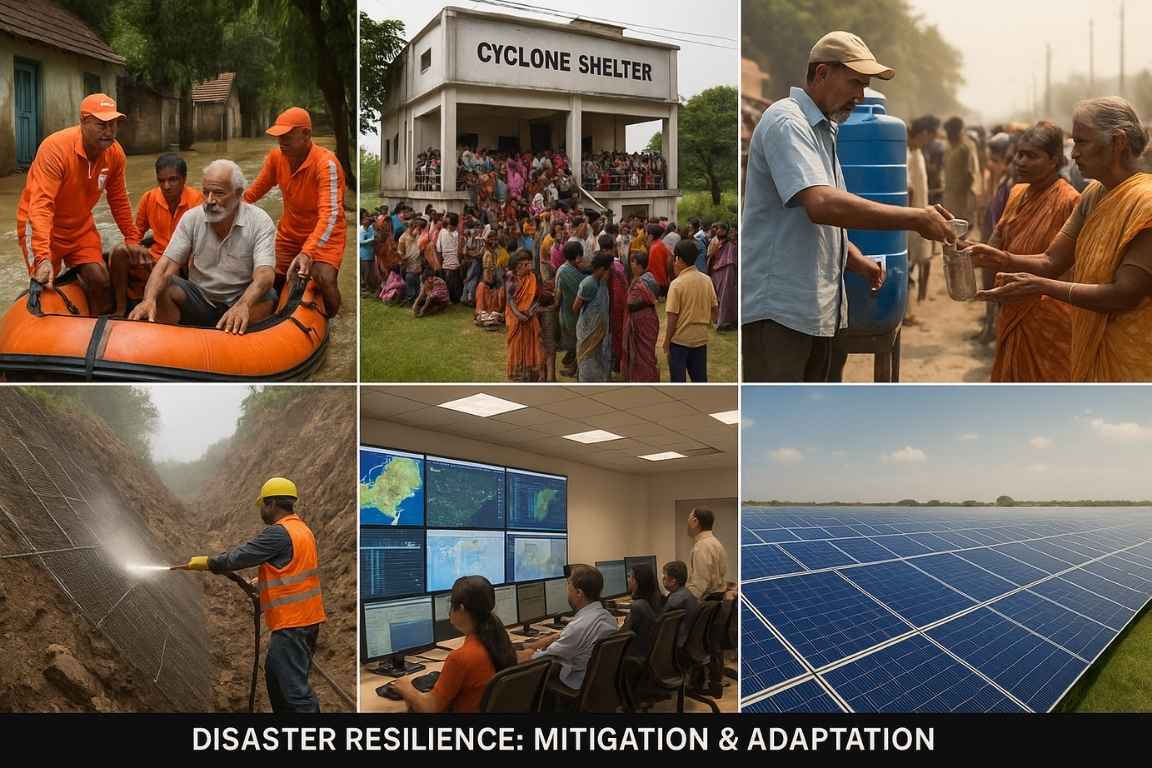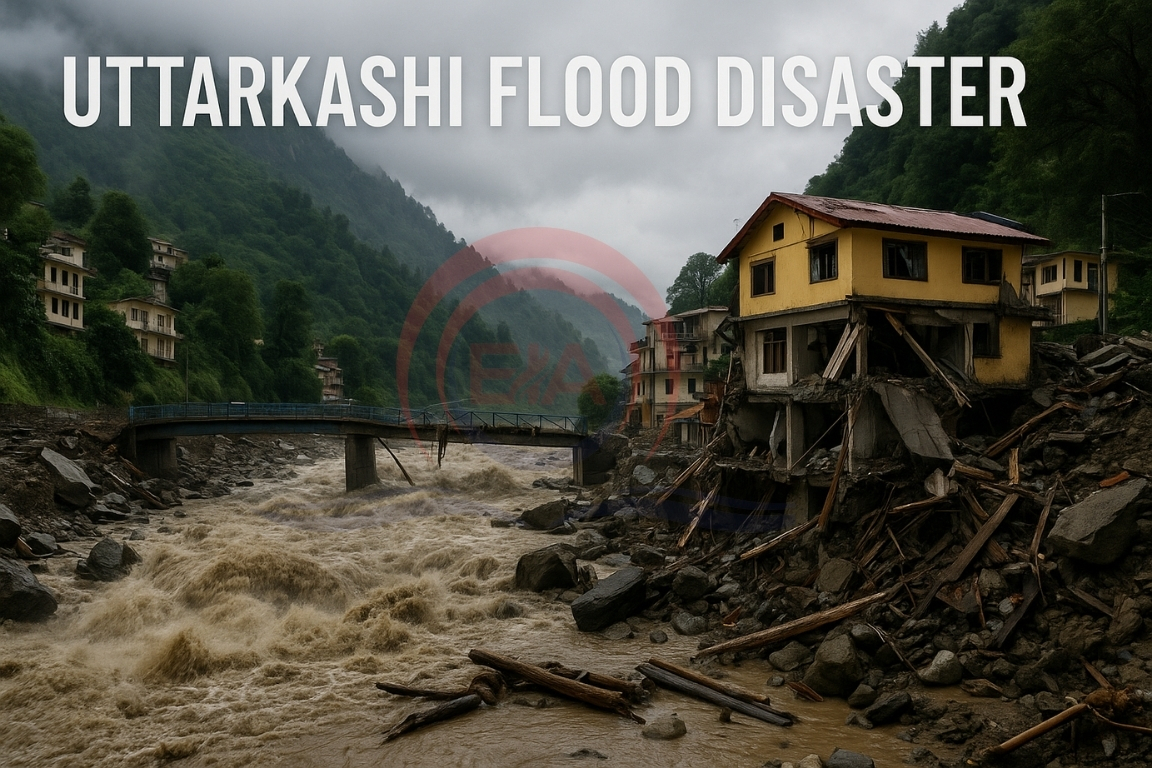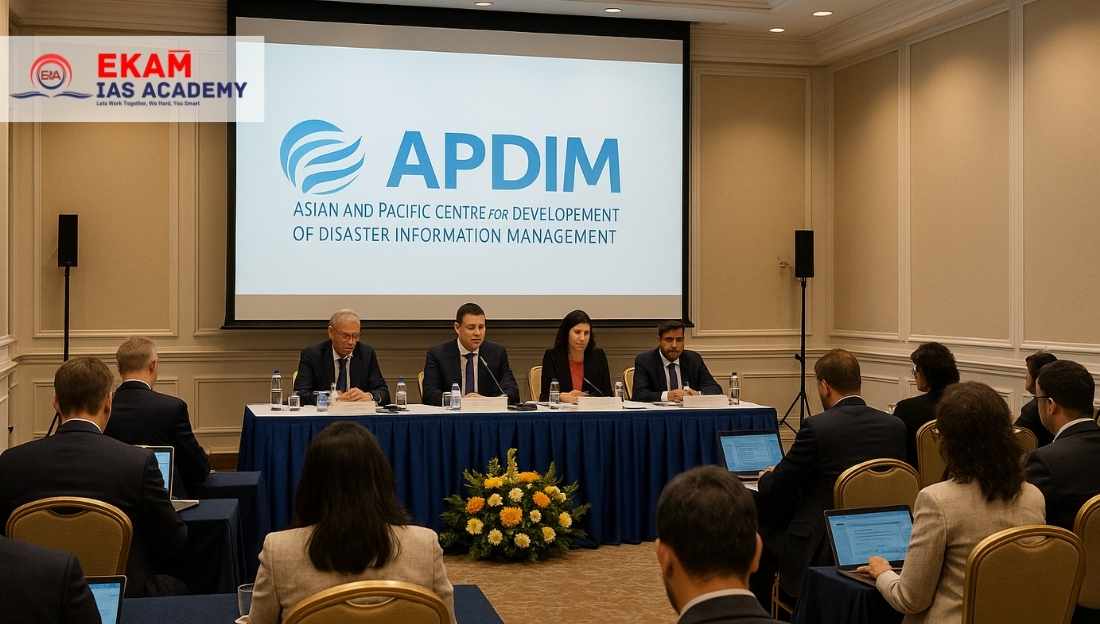India is witnessing frequent heatwaves and extreme rainfall events, making disaster resilience a national priority. The NDMA and Home Ministry are implementing a multi-hazard strategy guided by the Prime Minister’s 10-Point Agenda (2016) for Disaster Risk Reduction (DRR).
Background
- India faces multiple natural hazards — floods, cyclones, landslides, droughts, and heatwaves.
- DRR now focuses not just on response but also prevention, preparedness, and capacity building.
- The 15th Finance Commission (2021) allocated ₹2.28 lakh crore over five years to strengthen DRR measures.

15th Finance Commission’s DRR Approach
- 30% for pre-disaster measures: 10% for preparedness & capacity building, 20% for mitigation
- 70% for post-disaster actions: 40% for response 30% for reconstruction
Objectives:
- Integrate science-based mitigation into public finance.
- Build Centre–State–institutional synergy.
- Establish light-touch regulation and avoid duplication.
Pre-Disaster Phase Initiatives
- Fire safety modernisation: ₹5,000 crore allocation.
- Volunteer networks: Apda Mitra and Yuva Apda Mitra – 2.5 lakh trained volunteers.
- Capacity building: Geo-spatial labs, faculty-led research, and a standardised 36-stream DM course at NIDM.
- Goal: mainstream disaster education up to the panchayat level.
Mitigation Measures (20% Allocation)
- ₹10,000 crore projects sanctioned for nature-based solutions.
- Focus areas:
- Urban flood control through water body revival.
- Glacial lake monitoring via remote sensing.
- Bio-engineering for landslide-prone slopes.
- Beel rejuvenation in Brahmaputra valley.
- Forest fire prevention through fuel breaks and water lines.
- Cyclone Mitigation Programme (2011–22) reduced coastal vulnerability via shelters, embankments, and early warning systems.
Reconstruction & Response
- ₹5,000 crore packages approved for Uttarakhand, Himachal Pradesh, Sikkim, Assam, Kerala.
- Scientific damage assessments underway for monsoon-affected areas.
Early Warning & Community Preparedness
- Multi-media alert system in local languages.
- Mock drills, school safety drives, and training institutes (NIDM, NDRF Academy, NFSC) enhance readiness.
Global Cooperation
- India leads Coalition for Disaster Resilient Infrastructure (CDRI).
- Active role in G20, SCO, BIMSTEC, IORA on DRR initiatives.
- Focus on sharing best practices and nature-based solutions globally.
MITIGATION
Definition: Actions taken to reduce or prevent the causes of climate change, especially by lowering greenhouse gas emissions or enhancing carbon sinks.
Objective: Limit the severity of climate change and its long-term impacts.
Examples:
- Switching from fossil fuels to renewable energy (solar, wind).
- Promoting energy efficiency in industries and households.
- Afforestation and reforestation to absorb CO₂.
- Carbon pricing or carbon trading policies.
ADAPTATION
Definition: Actions aimed at adjusting human or natural systems to cope with the impacts of climate change that are already occurring or expected.
Objective: Reduce vulnerability and enhance resilience to climate risks.
Examples:
- Building flood-resistant infrastructure.
- Developing drought-resistant crop varieties.
- Creating early warning systems for cyclones, floods, or heatwaves.
- Promoting water conservation and rainwater harvesting.
Conclusion
India’s DRR strategy is shifting from reactive relief to proactive resilience, combining scientific innovation, nature-based mitigation, and community participation. With strong finance, capacity, and global partnerships, India is building a disaster-resilient future.





